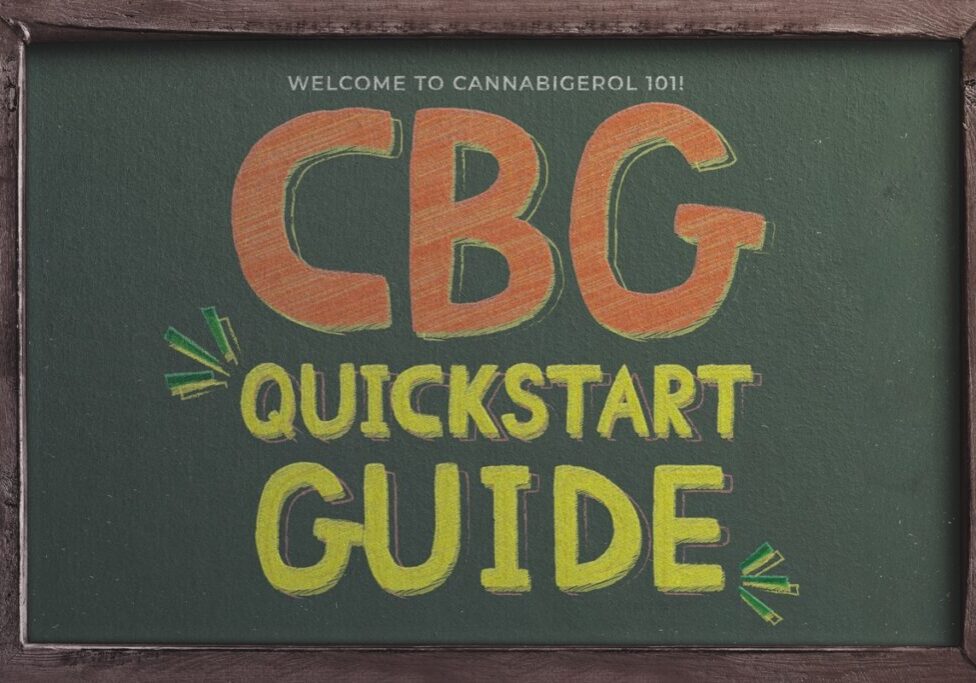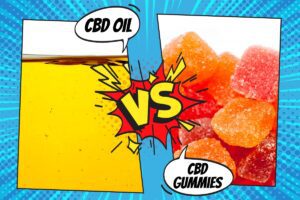CBG is the most important cannabis plant compound you’ve probably never heard of. Without it, CBD and the other natural wonders of cannabis sativa would not be possible!
So, just what is CBG, and how does it help you feel better? Stick around, and we’ll tell you everything you need to know in today’s CBG 101 blog.
First, we’ll start with some basics to get you up to speed. Then we’ll get to the fun stuff, like figuring out how CBG works and learning how it acbgmplifies CBD benefits when taking them together. Plus, we’ve got a CBG dosage chart to help you find your perfect dose!
Cannabigerol basics
CBG is short for cannabigerol [pronounced kah-nuh-bih-jur-all]. Scientists call CBG a phytocannabinoid because it’s derived from cannabis sativa plants. CBG does not have psychoactive effects, so it won’t get you high no matter how much you take.
In the cannabis world, CBG is affectionately referred to as the “Mother of All Cannabinoids” because it forms the molecular basis for over 100 cannabinoid compounds produced by the plant. None of the other cannabinoids — not even CBD or THC — would exist without CBG, the building block for them all.
Cannabis plants produce “major” and “minor” cannabinoids. Cannabidiol (CBD) is the most abundant medicinal cannabinoid compound, so it is considered a major cannabinoid. CBG, on the other hand, is only found in trace amounts, which is why we call it a minor cannabinoid.

RELATED READING: In a showdown between CBG vs CBD, who wins?
Naturally occurring CBG levels in CBD cannabis preparations are generally much lower compared to other minor cannabinoid compounds. Researchers think it is because CBG molecules eventually become all the other cannabinoids through biosynthesis, with very little CBG left in the hemp plant once all is said and done.
You’ll get the best results when you supplement your CBD wellness plan with a separate CBG product like a 1,000 mg CBG oil isolate tincture from Zero High®.
Next, let’s explore how CBG works in the body to help you feel better.

FAST FACT
Pairing cannabigerol with CBD can supercharge therapeutic benefits because of the entourage effect, a synergistic phenomenon that helps cannabinoids work better together.
How it works: The magic behind CBG
CBG and other plant-derived cannabinoids are similar to compounds the human body makes called endocannabinoids.
Both cannabinoid types use the endocannabinoid system (ECS) to regulate various physiological processes in the body. Knowing how the ECS works is essential to understanding how CBG helps you feel better. According to scientific research, the most important job of the ECS is maintaining homeostasis, a key process that stabilizes the body’s internal environment when it gets thrown out of balance.
You can think of endocannabinoids as your body’s own internal chill pill that affects mood, anxiety levels, inflammation, pain management, and gut health. Hemp plant-derived cannabinoids like CBG are unique because they can mimic endocannabinoids — and your body can’t tell the difference! So, when you take CBG, your body’s cannabinoid receptors respond just as they would to endocannabinoids, restoring balance and relieving everyday wellness concern symptoms.
What is CBG good for?
CBG is a multi-target medical cannabis product that uses numerous molecular pathways to change the way you feel.
You already know how CBG uses endocannabinoid receptors to balance essential body systems. But new clinical studies show that CBG also interacts with other receptor systems. These receptor sites work in tandem with the ECS to restore balance and promote natural health benefits using the power of cannabis plant medicine.
TRPV-1
Transient receptor potential vanilloid 1 (TRPV-1) detects and responds to heat and acidic conditions with pain, warmth, and burning sensations. TRPV-1 activation triggers the release of pro-inflammatory or anti-inflammatory compounds, shaping the body’s response to perceived injury.
Clinical research shows when CBG interacts with TRPV-1 receptors, it “flips the switch” and tells them to turn off and block pro-inflammatory activity. As a result of the CBG interaction, TRPV-1 receptor sites switch gears and produce anti-inflammatory neuropeptides that flush inflammation from the body.
PPARγ
Peroxisome proliferator-activated receptor gamma (PPARγ) regulates glucose metabolism and fat cell production. When PPARγ receptors are activated, they enhance insulin sensitivity. PPARγ receptors also have anti-inflammatory properties, playing a role in moderating healthy immune system activity to reduce inflammation.
Studies show that CBG activity at PPARγ receptor sites is primarily responsible for its analgesic, anti-inflammatory, neuroprotective, and metabolic activity. PPARγ receptors work in conjunction with traditional binding sites like cannabinoid CB1 and CB2 receptors and TRPV-1 ion channels.
5-HT1A
Serotonin 1A receptors are widely distributed in the brain, where they modulate the release of the neurotransmitter serotonin. 5-HT1A receptors play a crucial role in regulating fear perception, the fight-or-flight response, mood balance, anxiety levels, and everyday stress tolerance.
CBG’s effect on serotonin signaling has yet to undergo thorough research and analysis. However, early scientific study using animal models shows CBG affects 5-HT1A receptors in a similar way to the major cannabinoid CBD, even though they have different actions at the receptor site. Researchers think that CBG benefits anxiety and other emotional wellness concerns due to its similar effects on serotonin availability.
α-2AR
Alpha-2 adrenergic receptors primarily reduce levels of norepinephrine and other neurotransmitters. When activated, they initiate a relaxation response that tells your body to lower the heart rate and reduce blood pressure through vasodilation. Activation of α-2A receptors also promotes a sedative effect that soothes anxiety and may help to relieve neuropathic and inflammatory pain.
Scientific research shows CBG is a potent agonist at the α-2A receptor site. This means CBG binds to and strongly activates α-2A receptors, even at low doses. Taking CBG may result in lower blood pressure and heart rate. CBG can also promote deep relaxation and sedation, especially when using high doses.
How much CBG should I take?
How much cannabigerol you need depends on your weight. Use the dosing chart below to determine your perfect CBG dose!
Find your body weight in the first column to see how much CBG is recommended. Then, choose the CBG dose strength that’s right for you:

Begin with the suggested starting if this is your first time taking CBG. Low doses are recommended for new CBG users because they promote benefits without increasing the risks of side effects. You may increase your CBG dose once you know how it makes you feel.
CBG Questions & Answers
You’re probably excited to add CBG to your wellness plan. Before diving in, review these frequently asked questions from readers who recently discovered CBG for everyday wellness. Reach out to a Cannabiva Sales Associate if you have CBG product questions we haven’t covered today.















